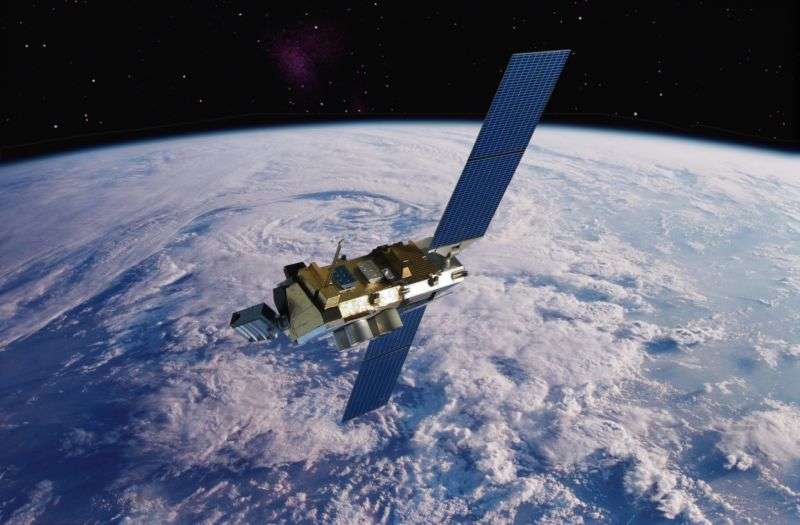
5G likely to mess with weather forecasts, but FCC auctions spectrum anyway

A US Navy memo warns that 5G mobile networks are likely to interfere with weather satellites, and senators are urging the Federal Communications Commission to avoid issuing new spectrum licenses to wireless carriers until changes are made to prevent harms to weather forecasting.
The FCC has already begun an auction of 24GHz spectrum that would be used in 5G networks. But Sens. Ron Wyden (D-Ore.) and Maria Cantwell (D-Wash.) today wrote a letter to FCC Chairman Ajit Pai, asking him to avoid issuing licenses to winning bidders “until the FCC approves the passive band protection limits that the National Aeronautics and Space Administration (NASA) and the National Oceanic and Atmospheric Administration (NOAA) determine are necessary to protect critical satellite‐based measurements of atmospheric water vapor needed to forecast the weather.”
Wyden and Cantwell said that the “ongoing sale of wireless airwaves could damage the effectiveness of US weather satellites and harm forecasts and predictions relied on to protect safety, property, and national security.” They chided the FCC for beginning the auction “over the objections of NASA, NOAA, and members of the American Meteorological Society (AMS). These entities all argued that out-of-band emissions from future commercial broadband transmissions in the 24GHz band would disrupt the ability to collect water-vapor data measured in a neighboring frequency band (23.6 to 24GHZ) that meteorologists rely on to forecast the weather.”
The internal Navy memo on the topic, written on March 27 by Capt. Marc Eckardt, a Naval oceanographer, was made public by Wyden and Cantwell today.
The memo topic is “Operational impacts from potential loss of NOAA/NASA METOC [meteorology and oceanography] satellite data resulting from the FCC spectrum auction for 5G.” The Navy memo summarizes the problem as follows:
- Remotely sensed observations (water vapor) may be degraded or lost due to growing interference from the broader adoption of 5G; specifically, in the 24GHz bands.
- Naval operations will continue but with a probable degradation of weather and ocean models, resulting in increased risk in Safety of Flight and Safety of Navigation, and degraded Battlespace Awareness for tactical / operational advantage.
“Partial-to-complete loss” of measurements
The Navy memo cited NOAA and NASA studies on interference from 24GHz spectrum, which is intended for mobile use and is adjacent to spectrum used for weather operations.
“[A]s such, it is expected that interference will result in a partial-to-complete loss of remotely sensed water-vapor measurements,” the Navy memo said. “It is also expected that impacts will be concentrated in urban areas of the United States first.”
The problem could affect Navy and Marine Corps forecasts of tropical cyclones as well as rain, ice, and snow, the memo said. The Navy memo recommends asking the FCC to “tighten out-of-band interference by reducing bleed-over limits to -57dB.” The memo also says the Navy should “work with NOAA and NASA to continually assess and quantify actual impacts” and develop mitigations including “limited use of other channels, substitution of lesser-fidelity parameters, and the development of new techniques and algorithms through new research and development.”
The Navy’s concerns are shared by meteorologists quoted in a recent Nature article.
As Wyden and Cantwell told Pai, “Numerous scientists in the US and elsewhere, and several US federal agencies, have warned that allowing communications in the 24GHz band at the interference levels permitted by the FCC would substantially impact the accuracy of weather forecasts crucial to the Department of Defense (DOD), public safety officials, the commercial fishing industry, farmers, and millions of Americans who depend on accurate forecasts of floods, hurricanes, winter storms, and tornadoes.”
Questions for Pai
Wyden and Cantwell asked Pai several questions, requesting answers by June 11. First, the senators asked Pai to provide evidence that 24GHz broadband transmissions “will not impact applications in adjacent frequency bands, particularly satellite measurements of water vapor in the 23.8 GHz band that is so important to weather forecasting.” The FCC should provide “computer models, assumptions, and analysis” it used in making its decision, the senators wrote.
Wyden and Cantwell also asked Pai what the FCC will do if the International Telecommunication Union “refuses to accept” the FCC’s emissions limits in the 24GHz band.
The senators also want Pai to provide a detailed explanation of the process it used “to resolve the dispute between NASA/NOAA and the FCC in favor of the FCC’s position.”
The senators’ last request to Pai is as follows:
Explain and provide supporting documentation related to the FCC’s public interest analysis, including any cost-benefit analysis, on the FCC’s emissions limit. In particular, explain how the FCC addressed the costs to taxpayers from the loss of billions of dollars of investment in weather-sensing satellites, the costs to public safety and national security, and to the nation’s commercial activities that rely on this critical weather data.
We contacted Pai’s office about the Navy memo and the Wyden/Cantwell letter today, and we will update this story if we get a response.




